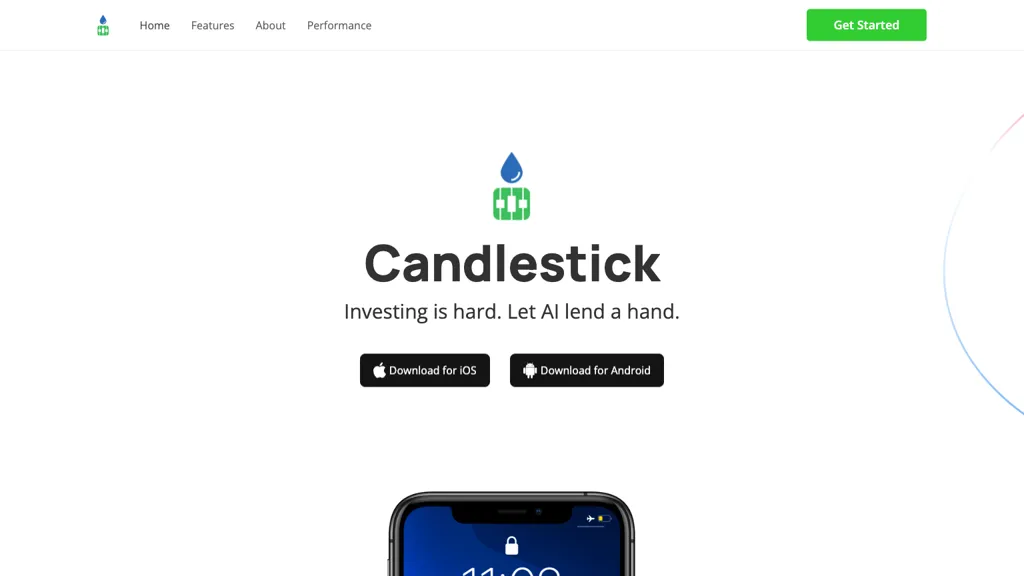20 Best Suggestions To Picking AI Stock Picker Platform Sites
20 Best Suggestions To Picking AI Stock Picker Platform Sites
Blog Article
Top 10 Tips To Evaluate The Accuracy Of Ai Trading Platforms That Predict Stocks Or Analyze Trading Data
To be certain that the platform you choose is able to provide reliable information and forecasts, you must be able to evaluate its accuracy and performance. Here are the top 10 tips to evaluate these platforms effectively:
1. Backtesting Results
What to Look for: Determine if the platform offers backtesting to determine how well its predictions would have performed with the past data.
Why it is Important: By Comparing the AI model's predictions to actual historical outcomes testing its accuracy, backtesting proves its reliability.
Tip: Choose platforms that let you customize the parameters for backtesting (e.g. time periods or asset categories).
2. Real-time Performance Monitoring
What to Look for: See the performance of the platform in comparison to the current market conditions.
Why It Matters : Real-time platform performance is better than backtesting using historical data.
Tips: You can make use of a demo account or a trial version of the program to monitor live movements in real time and compare them to your forecasts.
3. Prediction Error Metrics
What to Look For Analyze metrics like Mean Absolute Error (MAE) and the Root Mean Squared Error (RMSE), or R-squared, to measure the accuracy of your predictions.
Why It's Important: These metrics give a quantitative measurement of how closely predictions are in line with the actual outcomes.
Tip: Platforms which openly share their metrics tend to be more transparent and trustworthy.
4. The rate of success and winning ratio
What to Look for: Check out the winning rate of the platform, which is the percent of forecasts that are accurate. Also, look at its success ratio (the return on trades based on the predicted outcomes).
Why It Matters Why it matters: A high winning rate and success rate indicate higher forecasting accuracy and potential profits.
There is no perfect system. Beware of sites with unrealistic winning rates, e.g. 90% %+),.
5. Benchmarking Market Indices against Benchmarks
What to Look for: Check the predictions and the performance of the platform against the major market indexes.
What is vital because it will help determine if this platform outperforms (or is underperforming) the wider market.
Find out if you can achieve steady gains over a long period of time.
6. Consistency across Market Conditions
What to Look for Look at what the platform's performance is in various market conditions.
What is important A well-constructed system must be successful not only in favorable market conditions, but in all other conditions too.
Test the platform's predictions in turbulent markets or during market declines.
7. Transparency in Methodology
What to look for: Understand the AI models and algorithms that are used (e.g., neural networks, reinforcement learning).
Why is it important: Transparency helps you evaluate the reliability and scientific rigor.
Avoid platforms using "black box models" that don't explain how predictions can be generated.
8. User Reviews and Independent Testing
What to Look For What to Look For: Read reviews from users and look for independent tests or third-party reviews of the system.
Why it matters: Independent test results and reviews provide objective insights on the platform's accuracy and performance.
Check out forums like Reddit or copyright to see what other users have to say about their experiences.
9. Risk-Adjusted Returns
What to look for: Use risk-adjusted metrics like the Sharpe Ratio (or Sortino Ratio), to evaluate the platform's performance.
Why It's Important The metrics are a reflection of the risk required to earn results. They provide a better picture of the overall performance.
Sharpe ratios (e.g. higher than 1) indicate a higher risk-adjusted return.
10. Long-term Track Record
What to Look For What to Look For: Examine the platform's performance over a longer period (e.g. three years,).
What is important. Long-term performance can be a better indicator for reliability than short term results.
Do not use platforms that have only short-term success or results that are cherry-picked.
Bonus Tip: Test your account using a demo version
Utilize a demo account, or a free trial to test the platform's predictions in real-time, without putting your money into money. You can test the reliability of predictions and their performance.
These guidelines will help you determine the accuracy of AI stock-predicting and analyzing platforms and pick one that best suits your trading goals and the risk tolerance. Don't forget that no platform will be the perfect one. Combining AI insights with your research is the best method to choose. Take a look at the recommended best ai stock hints for more examples including market ai, ai for trading, ai trading, ai chart analysis, ai trade, ai stock market, best ai stock trading bot free, ai trade, ai for trading, ai investment app and more.
Top 10 Tips For Assessing The Scalability Ai Technology For Predicting And Analyzing Trading Platforms
To ensure that AI-driven stock trading and prediction platforms can scale, they must be able to cope with the increasing volume of data and complexity in markets, as well as user demands. These are the top 10 ways to determine the capacity of these platforms.
1. Evaluate Data Handling Capacity
Tips: Make sure the platform is able to analyse and process large data sets (e.g., historical stock data, live market feeds, or other data sources like news and social media).
Why: Scalable platforms must manage increasing volumes of data without performance degradation.
2. Test the capabilities of a Real-Time Processor
Check out how well your platform is able to handle streaming data in real time including live stock quotes, or breaking news.
The reason: The immediate analysis of trading decisions is vital since delays can cause you to miss opportunities.
3. Check for Cloud Infrastructure and Elasticity
Tip. Check if the platform uses cloud-based infrastructure such as AWS, Google Cloud and Azure, which can scale resources on demand.
Why? Cloud platforms are elastic and are able to be scaled up or down based on requirements.
4. Algorithm Efficiency
Tips: Evaluate the computational efficiency (e.g. deep-learning, reinforcement learning) of the AI models that are used to predict.
Why: Complex algorithmic structures can be resource-intensive. Making them more efficient is the key to scaling.
5. Examine Parallel Processing and Distributed Computing
TIP: Find out if the platform uses distributed computing or parallel processing frameworks (e.g., Apache Spark, Hadoop).
The reason: These technologies enable more efficient data processing and analytics across many nodes.
Review API Integration and Interoperability
Test the platform’s integration capabilities with APIs that are external to the platform.
The reason: seamless integration means the platform can adapt to the latest data sources and trading environments.
7. Analyze User Load Handling
To test the performance of your platform, try simulated high traffic.
Why: Scalable platforms should offer the same level of performance regardless of the number of users.
8. Examine the model's retraining capabilities and the model's adaptability
Tip: Check how frequently the AI model is retrained and at what rate.
The reason is that models must continuously change to keep up with the ever-changing market to stay accurate.
9. Examine fault tolerance and redundancy
Tips: Make sure that the platform includes failover mechanisms and redundancy in case of hardware or software failures.
Why is downtime so costly for trading. Fault tolerance is therefore essential to scalability.
10. Monitor Cost Efficiency
TIP: Take into consideration the cost of scaling your platform. Consider cloud resources such as data storage and computing power.
The reason is that it should be at a price that is viable. This means that you must balance performance against expense.
Bonus Tip: Future-proofing
Be sure that the platform supports advanced technologies (e.g. quantum computing, advanced NLP) and is able to adapt to regulatory changes.
Focusing on these aspects will enable you to evaluate the scale of AI stock prediction and trading platform, and ensure that they are sturdy and efficient, prepared for expansion in the future. Read the best helpful resource on ai stock analysis for website tips including ai in stock market, best ai stocks, stocks ai, stock trading ai, ai options trading, ai investment tools, best ai stocks to buy now, free ai stock picker, ai in stock market, chart analysis ai and more.